VW Tiguan vs Skoda Kodiaq – Differences & prices compared
Compare performance, boot space, consumption and price in one view.
Find out now: which car is the better choice for you – VW Tiguan or Skoda Kodiaq?
The VW Tiguan (SUV) comes with a Plugin Hybrid, Petrol, Petrol MHEV or Diesel engine and Automatic transmission. In comparison, the Skoda Kodiaq (SUV) features a Plugin Hybrid, Petrol MHEV, Diesel or Petrol engine with Automatic transmission.
When it comes to boot capacity, the VW Tiguan offers 652 L, while the Skoda Kodiaq provides 910 L – depending on how much space you need. If you’re looking for more power, decide whether the 272 HP of the VW Tiguan or the 265 HP of the Skoda Kodiaq suits your needs better.
In terms of consumption, the values are 0.40 L per 100 km for the VW Tiguan, and 0.40 L for the Skoda Kodiaq.
Price-wise, the VW Tiguan starts at 32800 £, while the Skoda Kodiaq is available from 36800 £. Compare all the details and find out which model fits your lifestyle best!
The Skoda Kodiaq and VW Tiguan, both sharing the same platform, present a compelling comparison for SUV enthusiasts. While the Kodiaq boasts a more spacious interior and a slightly more practical design, the Tiguan shines with its premium materials and sophisticated tech features. Ultimately, your choice may hinge on whether you prioritize versatility or a refined driving experience.
VW Tiguan
The VW Tiguan presents itself as a versatile and practical option in the SUV market, combining a stylish design with a spacious and comfortable interior. It offers a smooth driving experience, making it well-suited for both urban environments and longer journeys. With its focus on safety and innovative technology features, the Tiguan remains a compelling choice for families and adventurers alike.
details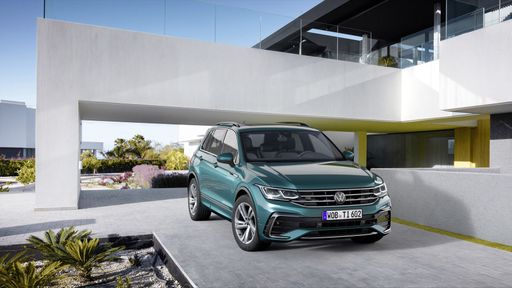 @ Volkswagen
@ Volkswagen
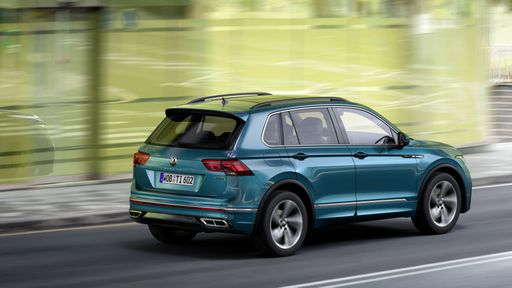 @ Volkswagen
@ Volkswagen
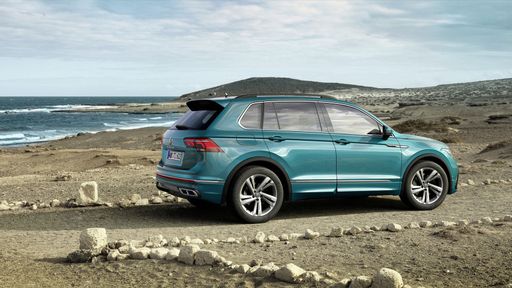 @ Volkswagen
@ Volkswagen
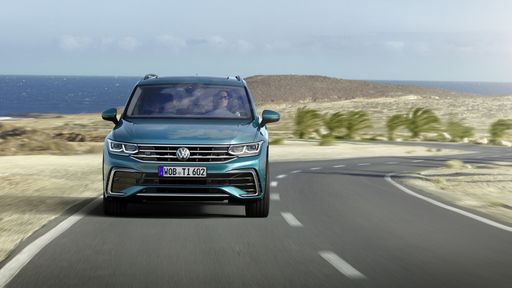 @ Volkswagen
@ Volkswagen
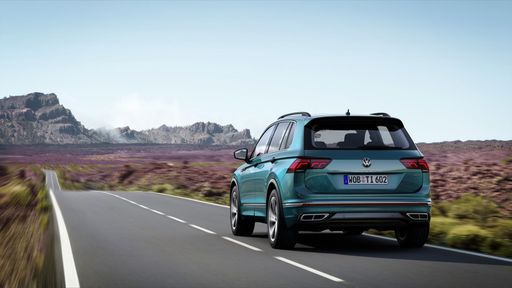 @ Volkswagen
@ Volkswagen
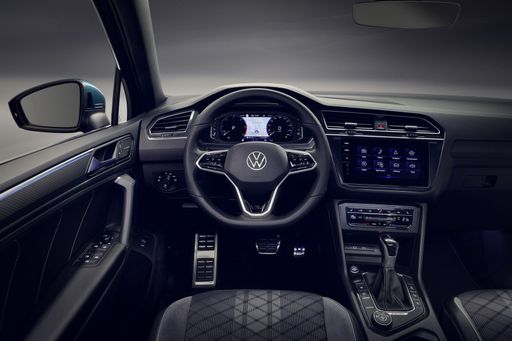 @ Volkswagen
@ Volkswagen
Skoda Kodiaq
The Škoda Kodiaq impresses with its spacious interior and sleek design, making it a popular choice for families and adventurers alike. Equipped with a range of modern features, it offers a comfortable driving experience and outstanding versatility. Its robust build and refined handling make it suitable for both urban settings and countryside escapades.
details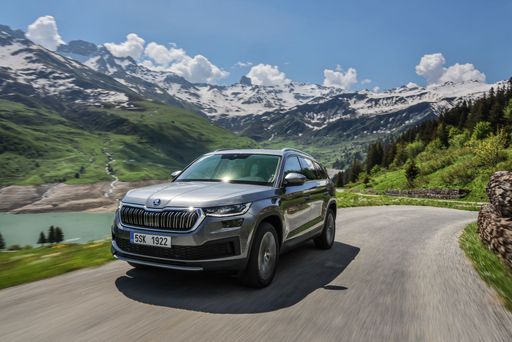 @ skoda-media.de
@ skoda-media.de
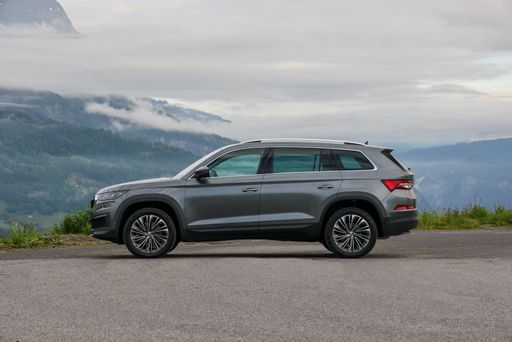 @ skoda-media.de
@ skoda-media.de
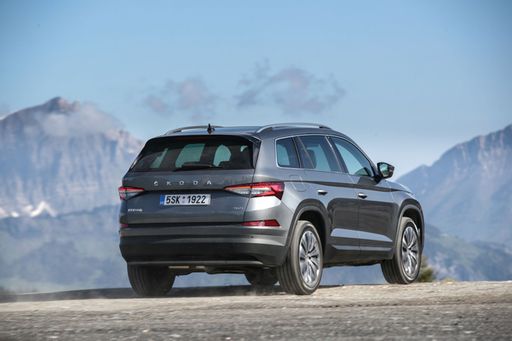 @ skoda-media.de
@ skoda-media.de
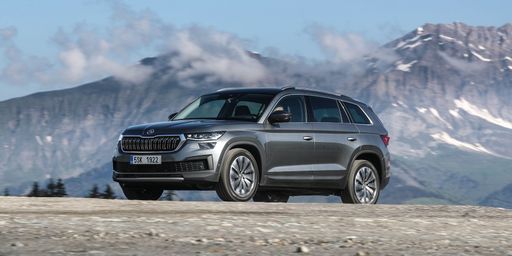 @ skoda-media.de
@ skoda-media.de
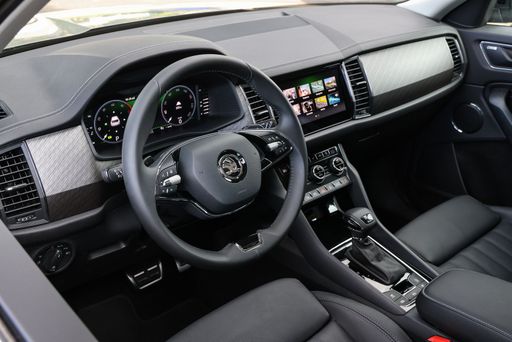 @ skoda-media.de
@ skoda-media.de
Skoda Kodiaq vs VW Tiguan: A Comprehensive SUV Comparison
The mid-size SUV segment is becoming increasingly competitive, with various models vying for supremacy. Today, we delve into two prominent contenders: the Skoda Kodiaq and the VW Tiguan. Both vehicles are crafted by the same automotive group, yet they exhibit distinct characteristics that cater to different consumer preferences. In this comparison, we will examine the technical specifications, performance, and innovative features of these vehicles.
Engine Variants and Performance
Both the Skoda Kodiaq and VW Tiguan come equipped with a diverse range of engine options. The Kodiaq boasts four engine variants across petrol, diesel, and hybrid platforms, with power outputs ranging from 150 hp to an impressive 265 hp. The vehicle offers torque figures up to 400 Nm, allowing for formidable acceleration. The Kodiaq can achieve 0-100 km/h in as little as 6.3 seconds with its most powerful engine.
On the other hand, the VW Tiguan presents a similar engine lineup but stands out with higher power in certain variants, reaching up to 272 hp. Its torque reaches similar levels, ensuring robust performance. The fastest Tiguan variant can also sprint from 0-100 km/h in just 5.9 seconds, showcasing its sporty prowess.
Fuel Efficiency and Emissions
When it comes to fuel consumption, both SUVs have eco-friendly options. The Skoda Kodiaq rates an impressive 0.4 L/100 km for its plug-in hybrid version, while the Tiguan matches it in the hybrid category, providing efficiency for eco-conscious drivers. The diesel variants for both vehicles present competitive fuel consumption figures in the 5 to 8 L/100 km range.
In terms of CO2 emissions, the Kodiaq and Tiguan also perform similarly, with some models exhibiting emissions as low as 9 g/km, making both SUVs appealing for those looking to minimize their carbon footprint.
Dimensions and Cargo Space
Dimensions play a vital role in the practicality of an SUV. The Skoda Kodiaq spans 4758 mm in length, making it slightly longer than the Tiguan's 4539 mm. The Kodiaq also outshines in cargo space, boasting a trunk capacity of 745 liters, which is a significant advantage for families or those requiring additional storage.
Contrastingly, the Tiguan offers a maximum cargo capacity of 652 liters, which, while less than the Kodiaq, is still adequate for urban dwellers and weekend adventurers alike.
Innovative Features and Technology
On the technological front, both SUVs come equipped with a host of innovative features. The Kodiaq offers a digital cockpit that seamlessly integrates with its infotainment system, as well as driver assistance features such as adaptive cruise control and lane assist. Additionally, its spacious interior is designed with a focus on comfort, featuring premium materials and state-of-the-art technology.
Similarly, the Tiguan includes VW's updated infotainment system that supports smartphone connectivity via Apple CarPlay and Android Auto. The cabin design emphasizes a modern aesthetic with user-friendly controls and driver-centric features. The Tiguan also excels in terms of safety technology, with advanced monitoring systems to assist drivers in various driving conditions.
Driving Dynamics and Comfort
In terms of driving experience, both the Skoda Kodiaq and VW Tiguan provide a balanced ride. The Kodiaq offers a more comfortable and spacious interior, perfect for long journeys or family outings. Its suspension setup is tuned for comfort, allowing it to tackle rough roads with ease.
The Tiguan, on the other hand, emphasizes sportier handling, making it feel more agile on the road. Drivers may appreciate the Tiguan's precise steering and responsive throttle, providing spirited performance without sacrificing comfort during daily commutes.
Final Thoughts: Which SUV Should You Choose?
Choosing between the Skoda Kodiaq and VW Tiguan ultimately boils down to individual preferences and requirements. The Kodiaq is ideal for those needing extra space and practicality, while the Tiguan caters to those who seek a sportier drive with excellent technology. Both SUVs stand as testaments to their brands' commitment to quality, innovation, and performance, making either choice a solid investment in the mid-size SUV segment.

|

|
|
|
|
Costs and Consumption |
|
|---|---|
|
Price
32800 - 51000 £
|
Price
36800 - 49600 £
|
|
Consumption L/100km
0.4 - 8.5 L
|
Consumption L/100km
0.4 - 8.2 L
|
|
Consumption kWh/100km
-
|
Consumption kWh/100km
-
|
|
Electric Range
119 - 129 km
|
Electric Range
113 - 123 km
|
|
Battery Capacity
19.70 kWh
|
Battery Capacity
19.70 kWh
|
|
co2
8 - 193 g/km
|
co2
9 - 186 g/km
|
|
Fuel tank capacity
45 - 58 L
|
Fuel tank capacity
45 - 58 L
|
Dimensions and Body |
|
|---|---|
|
Body Type
SUV
|
Body Type
SUV
|
|
Seats
5
|
Seats
5
|
|
Doors
5
|
Doors
5
|
|
Curb weight
1599 - 1890 kg
|
Curb weight
1661 - 1913 kg
|
|
Trunk capacity
490 - 652 L
|
Trunk capacity
745 - 910 L
|
|
Length
4539 mm
|
Length
4758 - 4761 mm
|
|
Width
1842 - 1859 mm
|
Width
1864 mm
|
|
Height
1656 - 1658 mm
|
Height
1663 - 1683 mm
|
|
Payload
460 - 533 kg
|
Payload
497 - 538 kg
|
Engine and Performance |
|
|---|---|
|
Engine Type
Plugin Hybrid, Petrol, Petrol MHEV, Diesel
|
Engine Type
Plugin Hybrid, Petrol MHEV, Diesel, Petrol
|
|
Transmission
Automatic
|
Transmission
Automatic
|
|
Transmission Detail
Dual-Clutch Automatic
|
Transmission Detail
Dual-Clutch Automatic
|
|
Drive Type
Front-Wheel Drive, All-Wheel Drive
|
Drive Type
Front-Wheel Drive, All-Wheel Drive
|
|
Power HP
130 - 272 HP
|
Power HP
150 - 265 HP
|
|
Acceleration 0-100km/h
5.9 - 10.6 s
|
Acceleration 0-100km/h
6.3 - 9.7 s
|
|
Max Speed
198 - 242 km/h
|
Max Speed
205 - 231 km/h
|
|
Torque
220 - 400 Nm
|
Torque
250 - 400 Nm
|
|
Number of Cylinders
4
|
Number of Cylinders
4
|
|
Power kW
96 - 200 kW
|
Power kW
110 - 195 kW
|
|
Engine capacity
1498 - 1984 cm3
|
Engine capacity
1498 - 1984 cm3
|
General |
|
|---|---|
|
Model Year
2024 - 2025
|
Model Year
2024 - 2025
|
|
CO2 Efficiency Class
B, G, D, E, F
|
CO2 Efficiency Class
B, E, F, G
|
|
Brand
VW
|
Brand
Skoda
|
VW Tiguan
Introducing the VW Tiguan: A Blend of Style and Innovation
The VW Tiguan has consistently been a popular choice among SUV enthusiasts, combining practicality with a touch of elegance. In the latest iteration, Volkswagen has continued this tradition with a range of technical updates and innovations.
Powertrains: Versatility Meets Efficiency
The VW Tiguan comes with a variety of engine options, catering to different preferences and needs. From the efficient petrol mild-hybrid variants to the environmentally friendly plug-in hybrids, and the robust diesel engines, there is something for everyone. The power output ranges from a modest 130 PS to an impressive 272 PS, ensuring that drivers can enjoy a powerful and dynamic driving experience.
Innovation remains at the heart of the Tiguan’s engineering. The plug-in hybrid models, for example, boast an electric range of up to 113 km, making them ideal for those looking to reduce their carbon footprint while still enjoying the flexibility of a traditional engine.
Advanced Transmission and Drivetrain
Equipped with a smooth and responsive automatic transmission, the Tiguan ensures a comfortable drive. The dual-clutch gearbox provides quick and seamless gear changes, enhancing the driving experience. Additionally, the Tiguan is available in both front-wheel and all-wheel drive configurations, offering excellent traction and stability across different driving conditions.
Performance and Efficiency
The Tiguan's performance capabilities are complemented by its efficiency. With fuel consumption as low as 0.4 L/100km for hybrid models, owners can enjoy long trips with fewer stops for refuelling. The CO2 emissions are also impressively low, aligning with modern environmental standards and expectations.
Design and Dimensions
The Tiguan’s aesthetic appeal is undeniable, with a robust character that exudes confidence and sophistication. Its dimensions—4,539mm in length, 1,842 to 1,859 mm in width, and up to 1,658mm in height—provide ample interior space, making it a versatile vehicle for families and adventure seekers alike.
Practicality is further emphasised by its sizeable boot space, ranging from 490 to 652 litres, ensuring plenty of room for luggage or shopping.
Safety and Technology
Volkswagen has not compromised on safety or technology. The Tiguan is equipped with the latest driver assistance systems, ensuring a safe journey for its occupants. Features like adaptive cruise control, lane assist, and emergency braking provide an extra layer of protection.
Pricing and Value
Starting from €38,250 to €59,535, the Tiguan offers a range of specifications and features to match different budgets. When considering the advanced technology, engine options, and the premium feel of the cabin, it presents excellent value for money.
Conclusion: The Ultimate SUV Experience
The VW Tiguan continues to impress with its blend of innovative technology, performance, and practicality. Whether you’re looking for an eco-friendly hybrid with a long electric range or a powerful diesel for longer hauls, the Tiguan provides an all-encompassing solution. With its refined design and superior comfort, it remains a leading choice in the SUV segment.
Skoda Kodiaq
The Skoda Kodiaq: An SUV at the Cutting Edge of Technology
The Skoda Kodiaq, a strikingly designed SUV, continues to impress with its blend of power, efficiency, and innovation. This popular model from Skoda combines advanced engineering with modern comforts, making it a favourite for families and adventurers alike. In this article, we'll delve into the technical details and innovations that make the Skoda Kodiaq a standout in the auto industry.
Powerful Performance Options
The Skoda Kodiaq offers a range of engine options to suit different driving preferences. From the efficient PlugIn-Hybrid models with up to 204 PS to the robust Diesel engines with up to 193 PS, drivers can choose the balance of power and efficiency that suits them. The performance is managed by an automatic transmission system, ensuring a smooth and responsive ride.
Innovation in Hybrid Technology
Skoda has taken significant strides in integrating hybrid technology into the Kodiaq. The PlugIn-Hybrid models boast an impressive electric range of up to 123 km, a testament to their efficient powertrain technology. Mild-Hybrid options are also available, offering a clever blend of petrol power with electrical assistance to reduce fuel consumption and emissions.
Comfortable and Spacious Interior
The Kodiaq's interior is designed with both luxury and practicality in mind. It offers ample space, with a boot capacity ranging from 745 to 910 litres, making it ideal for long journeys or family holidays. The vehicle's interior dimensions, complemented by a variety of high-tech features, ensure comfort and convenience for all passengers.
Advanced Safety Features
Safety is a top priority in the Skoda Kodiaq, with features such as advanced driver assistance systems, multiple airbags, and comprehensive stability controls. These technologies work together to provide drivers and passengers with peace of mind, whether on city streets or long motorway drives.
Impressive Fuel Efficiency
With fuel consumption rates as low as 0.4 L/100 km for hybrid versions, the Kodiaq sets high standards in terms of efficiency. Its Diesel counterparts also deliver competitive fuel economy. These efficient performances not only benefit your pocket but also contribute to reducing your carbon footprint.
Conclusion: A Blend of Efficiency and Power
In conclusion, the Skoda Kodiaq stands out with its combination of power, efficiency, and innovative technologies. With a variety of configurations to choose from, it is a vehicle that caters to diverse needs while ensuring an engaging driving experience. Whether it's the robust Diesel engines or the eco-friendly hybrid models, the Kodiaq continues to lead the way in the SUV segment.
Which drive types are available for the VW Tiguan?
Available as Front-Wheel Drive or All-Wheel Drive.
The prices and data displayed are estimates based on German list prices and may vary by country. This information is not legally binding.
